In this post, you’ll learn 30 magnificent frigatebird facts. These aerial pirates have a reputation for stealing the lunch of other seabirds. They also have an inflatable gular sac to impress the ladies.
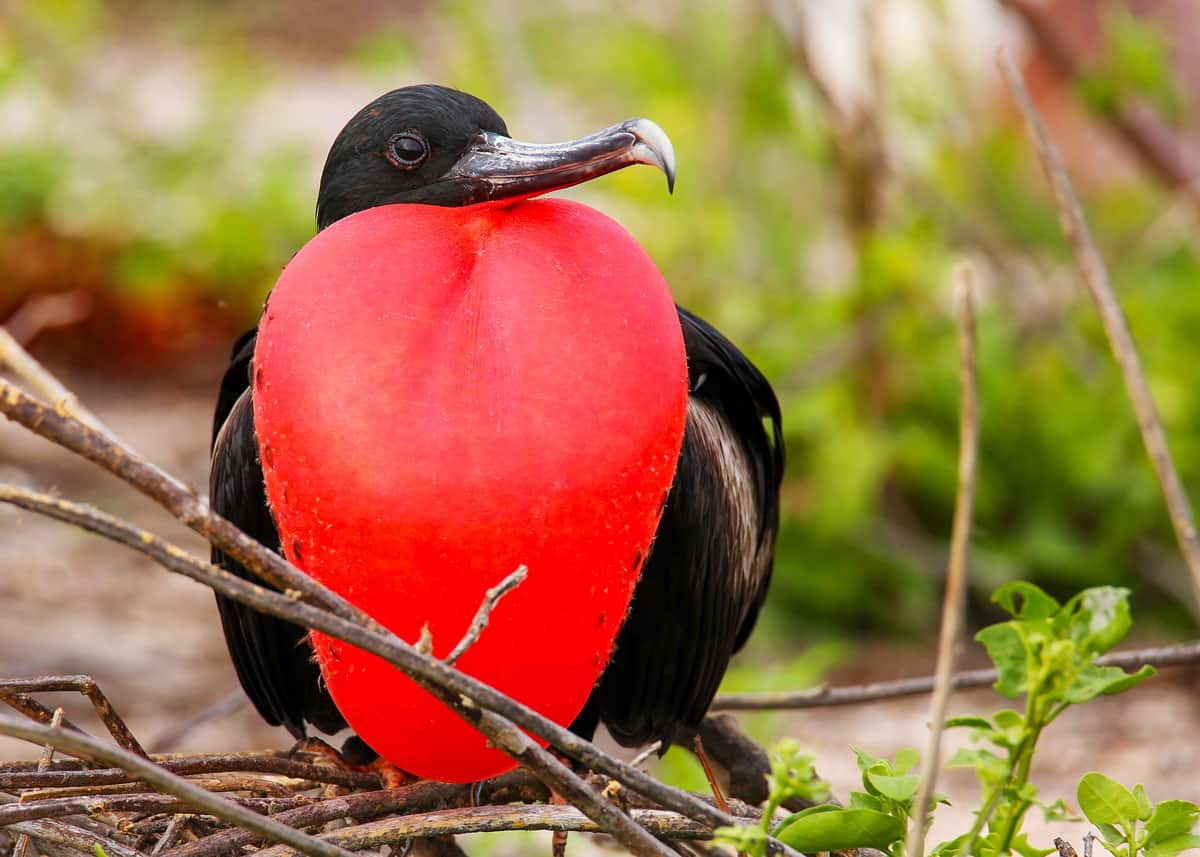
Table of Contents
30 Magnificent Frigatebird Facts: What You Need To Know
They are colorful, mesmerizing, shocking and strange all at the same time. They are graceful sky beauties with naughty behaviors. They are magnificent frigatebirds.
There are many intriguing features about this seabird. Some may be old news to you, and some may surprise you.
Here are 30 magnificent frigatebirds facts:
1. What does the magnificent frigatebird look like?
A large seabird with brownish-black plumage and grayish-black legs and feet, the male magnificent frigatebird is most distinguished by its bright red throat pouch (gular sac) that inflates like a balloon when he is trying to attract a mate.
When in flight, the bird’s long, pointed wings and forked tail make its silhouette easily recognizable because it looks like a kite gliding in the air.
Usually larger than the male, the female magnificent frigatebird is mostly black with tan mottling on the wings and has a white chest and pink legs. She has no gular sac.
A juvenile looks similar to the female but features a white head and bluish-gray legs, feet, and bill. Both sexes have short legs and a long, hooked bill.
2. How big is a magnificent frigatebird?
Of all the frigatebirds, the magnificent species is the largest.
In length, it measures between 35 and 45 inches (89 and 114 cm).
3. How much does a magnificent frigatebird weigh?
This large seabird weighs anywhere from 2.4 to 3.5 pounds (1.1 to 1.59 kg).
4. What is the magnificent frigatebird’s wingspan?
Ranging between 7.1 and 8.0 feet (2.17 and 2.44 m), the wingspan of the magnificent frigatebird is massive, enabling the bird to glide effortlessly and continuously for long periods of time.
When Charles Darwin first observed this bird, he was so captivated by it that he nicknamed it the “condor of the ocean.”
Among the more interesting magnificent frigatebird facts is that this seabird possesses the largest wingspan to body weight ratio of any other bird species in the world.
Watch on YouTube
5. How did the magnificent frigatebird get its name?
The magnificent frigatebird got its name from the French naturalist, Jean-Baptiste du Tertre, who described it in 1667 as a fast frigate ship that was often used during that time by pirates to rob other ships at sea.
Want to know why these birds were likened to pirate ships? Keep reading these magnificent frigatebird facts and we’ll tell you!
6. Are magnificent frigatebirds friendly?
I don’t think magnificent frigatebirds could be described as friendly, and you’ll find out why in the next question.
7. Are magnificent frigatebirds aggressive?
Yes, magnificent frigatebirds are aggressive. In fact, you could say they are pirates which is why they were named after pirate ships.
You may wonder, how are they pirates? They harass and rob other birds, especially gulls, of their food mid-flight. They often do this by grabbing the tails of other birds by their bills and shaking them to exhaustion until they either release their prey or regurgitate it.
Either way, the magnificent frigatebird is happy to get a free meal.
So, if you are ever in the Caribbean and hear seabirds making a loud commotion, look up and you might witness these pirate birds in action.
By the way, it takes hard work and practice learning how to be a successful pirate bird. Juvenile magnificent frigatebirds do this by playing a game where they hold sticks in their mouths while chasing each other in the air. When one of the youngsters gives in and drops his stick, the others dive to retrieve it.
Watch these magnificent frigatebirds stealing fish in Puerto Lopez, Ecuador.
Watch on YouTube
8. How long do magnificent frigatebirds live?
While there is little data about the magnificent frigatebird’s lifespan, it is estimated that they live between 15 and 35 years.
9. What eats a magnificent frigatebird? Predators and Threats
Besides rats, weasels and domestic cats, there aren’t any other animals that will eat a magnificent frigatebird. Most of the time, it’s the bird’s eggs that are eaten more so than the bird itself.
However, the magnificent frigatebird is burdened with some threats that include human disturbance, habitat loss, and a decline in food supply (in some areas).
10. Is the magnificent frigatebird endangered?
Despite the threats mentioned above, the magnificent frigatebird is not an endangered species.
The International Union for Conservative Nature (IUCN) categorizes the magnificent frigatebird as “least of concern.”
11. What do magnificent frigatebirds eat?
When magnificent frigatebirds aren’t plundering the prey and eggs of other birds, they love feeding on flying fish, squid, jellyfish, turtles, crabs, and scraps discarded from fishing boats.
They often watch for tuna schools and dolphin pods which drive smaller fish to the surface. Magnificent frigatebirds have an excellent knack for swooping down and snatching their prey out of the water with their long, hooked bills.
12. What is the magnificent frigatebird’s Latin name?
The Latin name for the magnificent frigatebird is Fregata magnificens.
13. What other names does the magnificent frigatebird have?
Besides Charles Darwin’s “condor of the oceans,” the British and Spanish back in the day called the magnificent frigatebird the “Man-of-War” and “pirate bird” due to its thieving habits.
14. Do magnificent frigatebirds mate for life?
No, magnificent frigatebirds do not mate for life, but they are considered seasonally monogamous. This means they stay together through only one breeding season.
Typically for this species, the male abandons his mate after about three months, leaving her to finish raising her chicks alone for up to a year. The next season, the male will mate with a different female.
Here are some birds that do mate for life.
15. At what age do magnificent frigatebird lay eggs?
Magnificent frigatebirds begin laying eggs when they are sexually mature which is around seven years of age.
16. How often do magnificent frigatebirds lay eggs?
Female magnificent frigatebirds are devoted (and maybe even overprotective) birds that lay eggs only every other year because they prefer to spend up to a year raising their young.
Only after their current juveniles are ready to fend for themselves will these mothers mate and lay eggs again. By the way, one of the most unique magnificent frigate bird facts is that the parental care period of these birds is the longest of all bird species.
17. How many eggs does the magnificent frigatebird lay? What do they look like?
After mating, the female magnificent frigatebird lays a single egg that is clear white in appearance and measures approximately 2.7 x 1.9 inches (68 x 47 mm).
18. What is the magnificent frigatebird’s call?
The call of the magnificent frigatebird is a repeated rattling noise that sounds much like someone trying to start a stalled car engine.
Watch on YouTube
19. Are magnificent frigatebirds loud?
These birds are silent when in flight over the ocean, but during the breeding season, it’s a whole different story. With several males all sitting in breeding colonies and swaggering their throat pouches to attract mates, they can be a rowdy bunch, making drumming calls, vibrating their wings, and clattering their bills.
Also, both sexes like to make a racket of rattling noises at their nest. This could be a means of discouraging predators from approaching.
20. Do magnificent frigatebirds carry disease?
Sadly, it is possible for magnificent frigatebirds, like other birds, to carry diseases such as avian malaria and avian influenza (bird flu).
Fortunately, researchers try to keep a watchful eye on any signs of these diseases appearing in populations so that they can take the needed measures to protect these birds (and humans, too).
21. Where does the magnificent frigatebird live?
Magnificent frigatebirds can be found soaring mainly in the Caribbean, but they can also be seen in Florida, the Gulf Coast, and along the coasts of the Atlantic and Pacific Oceans between the United States and Ecuador.
22. What is the habitat of the magnificent frigatebird?
Outside the breeding season, the magnificent frigatebird prefers to spend much of its time gliding over warm, coastal waters and roosting in the trees of tropical and subtropical islands and coasts.
During breeding, this bird nests in mangrove cays on coral reefs or in deciduous trees and shrubs that grow on dry islands or along coasts.
23. How long can frigatebirds fly?
One of the most impressive magnificent frigatebird facts is that these amazing seabirds can fly around 255 miles (410 km) a day for months at a time without landing and barely flapping their wings. It is even suspected that they sleep while on the wing.
How can they fly like that? They hitch a ride on a thermal column, or a rising current of warm air, that lifts them up to a high altitude where they can cruise for about 40 miles without flapping their wings.
When they begin to descend, they simply give a few flaps to lift back up, and they’re good to go again for a while.
24. How do frigatebirds sleep while flying?
While studies have been done on frigatebirds, no one is yet certain how, or even if, these birds sleep while flying.
Some experts suggest that they sleep with only one side of their brain while the other half remains awake and alert for any threats. Other researchers claim that frigatebirds do sleep but only about 45 minutes a day, and that is divided up by 10-second episodes.
25. Can frigatebirds get wet?
Frigatebirds can get wet but not for more than a couple minutes, or they could die. You see, unlike other seabirds, frigatebirds do not have waterproof feathers.
If their plumage becomes waterlogged, they are too heavy to launch off the water, and their short legs are not strong enough to aid them. So, frigatebirds must stay above the water surface lest they become fish food.
26. Do frigatebirds have webbed feet?
Yes, frigatebirds have little feet with four webbed toes which is a strange fact considering that they avoid treading water.
27. Where do magnificent frigatebirds nest?
Magnificent frigatebird pairs nest in colonies in stands of tropical trees or bushes. Once a male and female decide to hook up together, the male provides nesting materials such as grasses, leaves, twigs, feathers, and seaweed.
Often, the male will even steal these materials from other seabird nests. Isn’t that just like a pirate bird? The female does the actual nest-building work, most likely to make sure it’s done right.
28. Where can I see the magnificent frigatebird?
You can take a birding trip to Florida, northern Mexico, the Caribbean islands, or along the coast of Ecuador and the Galapagos Islands to see magnificent frigatebirds in the wild.
Barbuda, a Caribbean island that is part of the nation of Antigua and Barbuda, is home to the western hemisphere’s largest frigate bird colony and includes magnificent frigatebirds.
The Texas State Aquarium is home to a female magnificent frigatebird, named Storm, which was rescued after being wounded and handicapped during Hurricane Harvey. This is the only known North American aquarium/zoo to house this species.
Many of the magnificent frigatebirds living on the Galapagos Islands are not afraid of humans and are approachable.
29. What are the other types of frigatebirds?
There are a total of five living frigatebird species. In addition to the magnificent frigatebird, the other four kinds include:
- Great Frigatebird
- Lesser Frigatebird
- Christmas Island frigatebird (Endangered)
- Ascension Island frigatebirds (Endangered)
30. What’s the difference between magnificent frigatebirds and great frigatebirds?
There are two visible differences between these species:
- Males: The magnificent frigatebird has a purple sheen on its black back feathers and the great frigatebird has a green sheen.
- Females: The magnificent frigatebird has a blue eye ring and the great frigatebird has a red eye ring.
Your Turn
So, what do you think about the magnificent frigatebird? Did you learn anything new that you didn’t already know about this bird? What is the most surprising fact you learned? Still have questions? Let us know in the comments!
Drew Haines is an animal enthusiast and travel writer. She loves to share her passion through her writing.
She graduated high school at sixteen and started her own business, Everywhere Wild Media. And she runs Everywhere Wild and JustBirding. She also guest blogs on Storyteller.Travel
She lived in Ecuador for 6 years and explored the Galapagos Islands. Currently based in N.S., Canada.

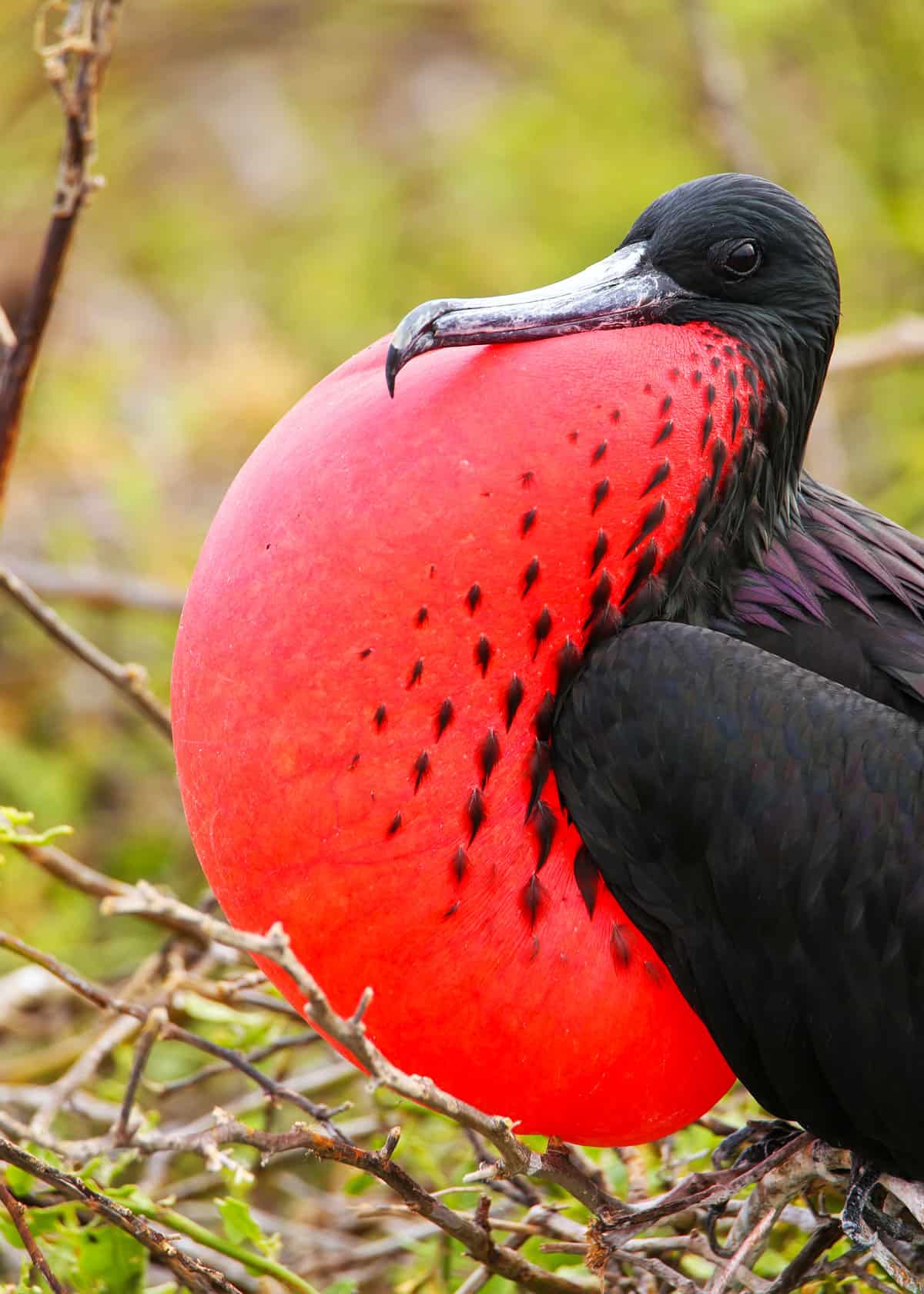
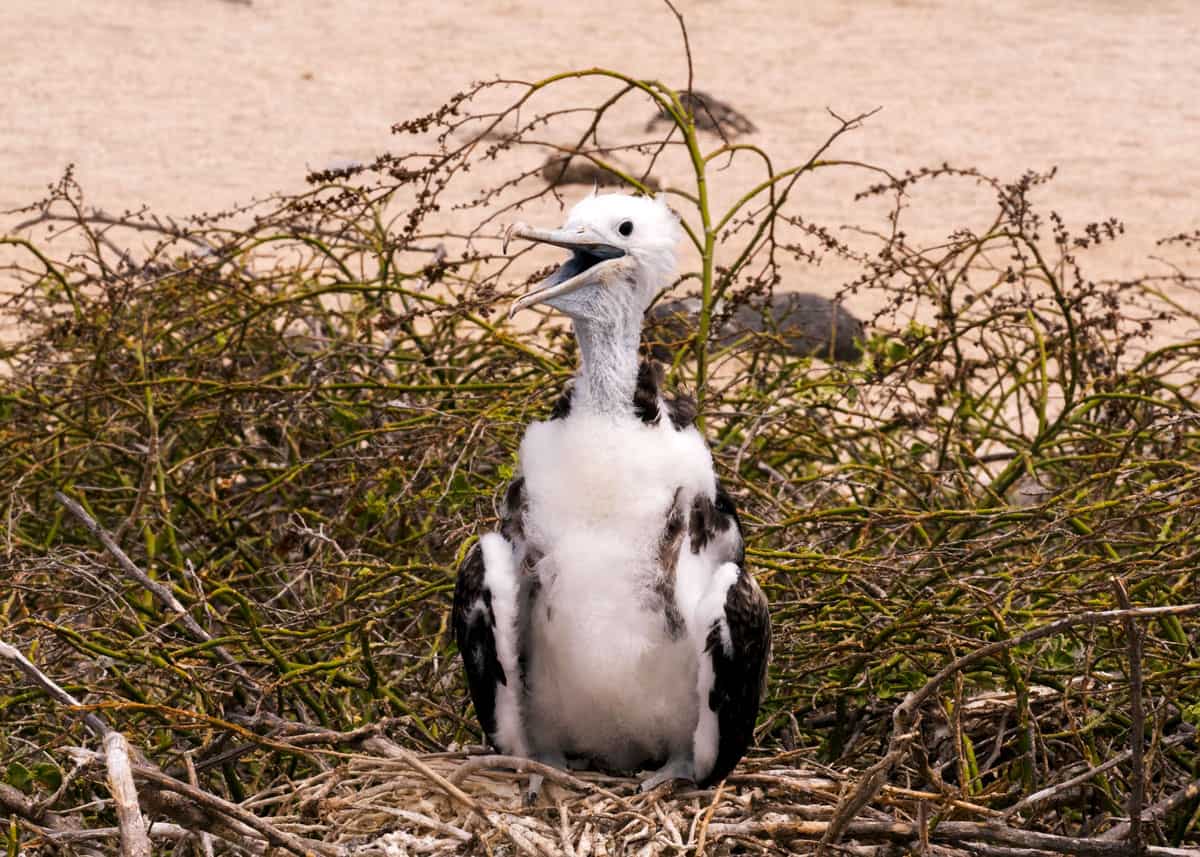
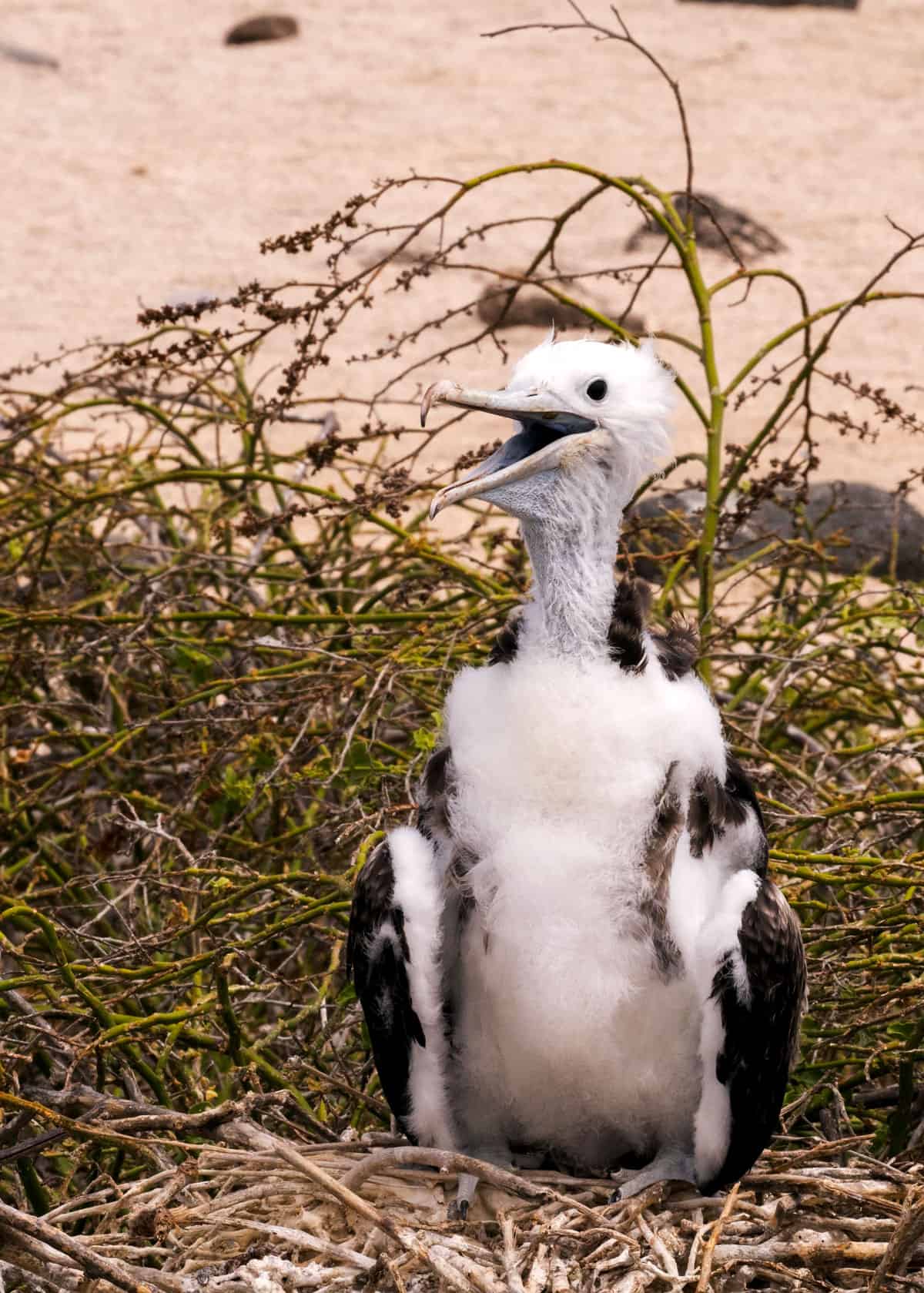
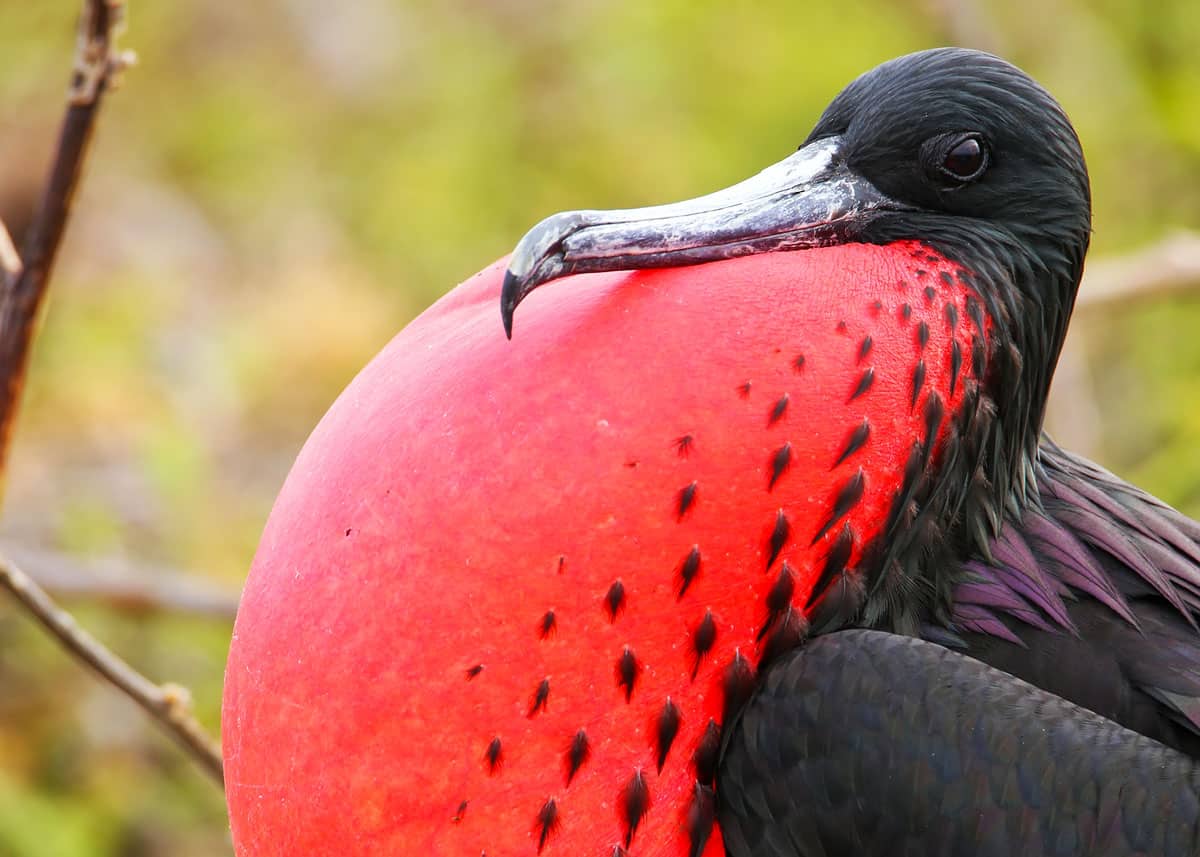
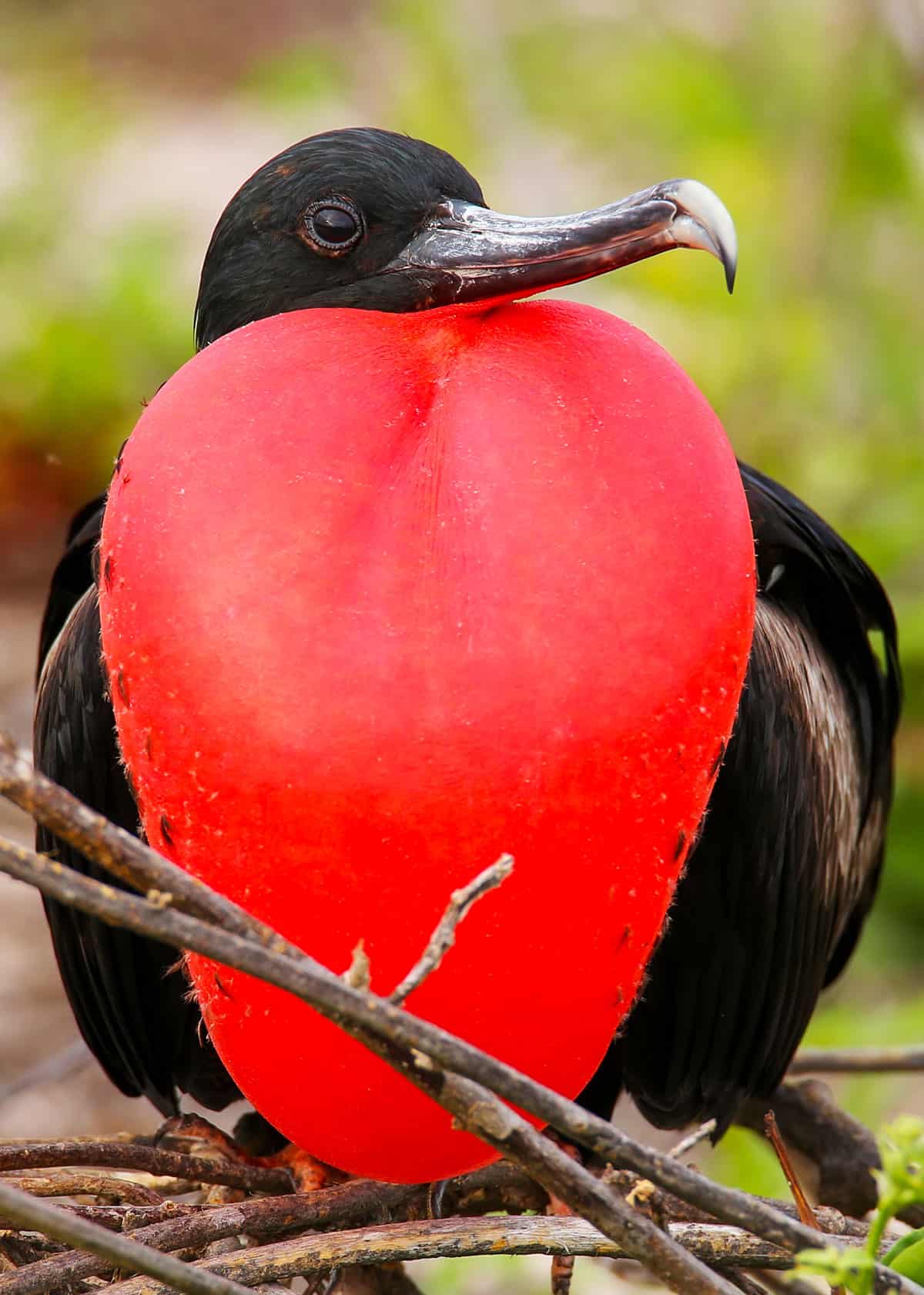
A Frigate Bird lands in the Chilaw Area | Thuppahi's Blog
Sunday 18th of August 2019
[…] ALSO SEE https://justbirding.com/magnificent-frigatebird-facts/ […]
Diane O'Brien
Thursday 15th of August 2019
Hi Drew,
I really enjoyed your article! Thanks for sharing all the information about the Frigatebirds (Piratebirds)! I never heard of them & saw their picture on a travel booklet about Latin America & I had to read more about them!
God Bless, Diane